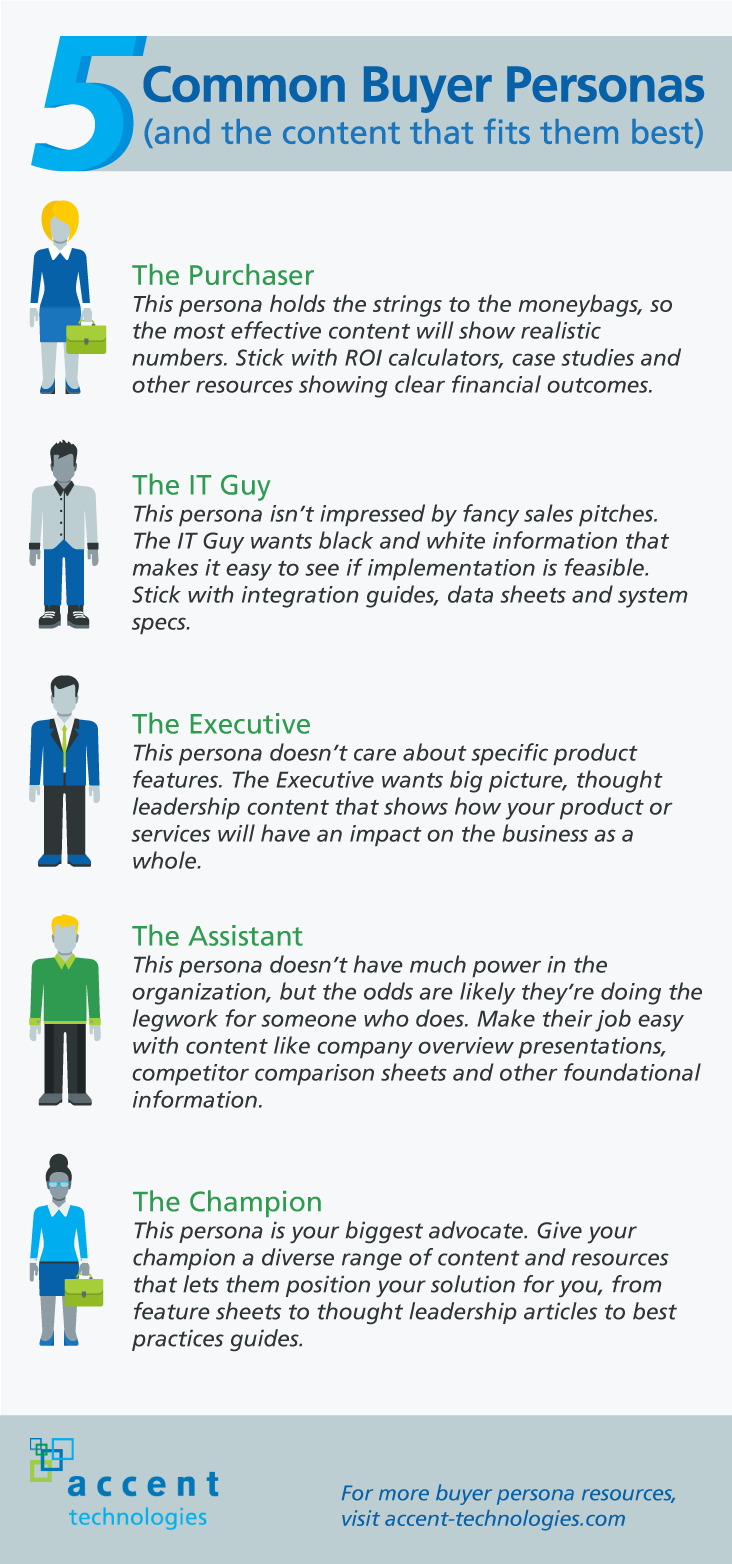marketing
How to map content to buyer personas: part 1—figure out your audience
A popular (and incredibly effective) trend in marketing and sales recently is to map content to buyer personas. This 5-part blog series will teach you a simple way to create content that directly targets individual buyers, enabling your sales and marketing teams to engage buyers more effectively.
Before you can map content to buyer personas, you have to understand what buyer personas are:
Buyer personas basically serve as a stereotypical characterization of the typical person who enters the sales cycle, summing up all of their key traits in a one or two-page document.
Personas give sales and marketing a simple way to manage buyer engagements across every stage of the sales cycle, from lead generation to closing the deal. With personas, it’s easier to pursue the right opportunities, kickstart conversations and make better content decisions, among other benefits.
To get a solid understanding of what buyer personas are best for you, follow the first step in content mapping:
Figuring out your audience
Personas are different for every company, depending on industry, company size, whether you’re selling B2B or B2C, etc. These guidelines can be used to identify the personas that are a perfect fit for your company:
Get a good variety
When selecting personas, it’s important to have a variety. Pick out your most common audiences, the audiences you’re not currently reaching but would like to reach more in the future, and the audiences you’re currently reaching but definitely don’t want in the future.
Your sales reps can use these personas to distinguish between the opportunities they should let slide and the ones that are really worth pursuing.
Learn from the past
A good starting point for B2B sellers is to look at your past buyers across the entire sales cycle. Put that marketing automation and CRM data to use.
Who were the people who closed the deals? Who first initiated contact? Which buyers went cold halfway through the sales cycle? Find the common denominators between your different buyer types. For example, you might close more deals with HR-based personas or spend too much time chasing after IT-based buyers.
Organize your buyers
The most common way to organize personas is by department (sales, legal, marketing, etc.). However, you don’t have to stick with department-based personas.
Other common ways to break down personas include personality-based personas (emotion-driven, logic-driven, etc.), industry-based personas (healthcare providers, legal services, etc.) or problem-based personas (has need for stronger organization, higher productivity, increased revenue, etc.). Take the elements you like from each method and combine them together into something that’s intuitive for your sales reps.
Check out the infographic below for a brief overview of 5 common role-based personas:
See the rest of the series here:
- Part 1: Figure out your audience
- Part 2: Build out your personas
- Part 3: The content audit
- Part 4: Content creation
- Part 5: Tracking content effectiveness












